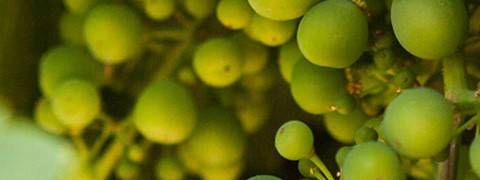



Known as a “winemaker’s grape,” Chardonnay can be a blank canvas. More than many other wines, Chardonnay is easily manipulated to achieve a wide range of desired profiles in the winery. There are numerous tools at a winemaker’s disposal, but we are asked about barrels the most. There is a lot to cover when it comes to oak and aging, so we put together a quick guide just for you.

Essentially, we are witnessing wine come into contact with wood and the exchange of oxygen that happens between them. Think of oak as a storage container that allows for slow, controlled interaction with oxygen. Now, think of each storage container as an ingredient in a spice rack. Each oak barrel has unique qualities based on the type of oak and how it is made. When you are baking a cake, you might add vanilla, cinnamon or butter to create different flavors or build richness. Oak barrels are really just ingredients in our spice rack!
New Oak – this fresh wood contributes additional flavor, structure and tannin that has an overall positive impact on the wine as it develops. No oak wood is truly fresh from the forest, however. When oak is harvested for barrels and split for staves, the wood is typically aged for at least 24 months and often heat treated to bend it into a barrel shape. This process ultimately influences the final flavors a barrel imparts and can vary greatly.
Neutral Oak – refers to an oak barrel that has previously been used for aging other wines. Neutral oak can affect the mouthfeel of a Chardonnay, for example, but will impart little to no flavor because of its prior use. Neutral oak still provides a large surface area for yeast lees to lay against, which allows for better integration with oxygen during aging to create a softer, richer and more complex wine.
Our winemaking program uses a combination of new and neutral oak to emphasize flavor, but also allows our estate grapes to speak for themselves.
Flavor Compounds – oak can add a lot of flavor to a wine, but the result completely depends upon the oak selected. Flavors can range from vanilla and coconut to smoke, spice or even dill.
Aging – the amount of time a wine spends in an oak barrel, usually measured in months, has a lot to do with wine type and style. Longer aging does not necessarily make a wine any better. Many white wines enjoy a shorter aging period, while reds, such as our Patriarch’s Promise, take longer to mature.
Toast – exposing the inside of a barrel to fire (or other heat sources) toasts the barrel and this has a huge influence on flavoring wine. Toasting caramelizes a wood’s natural sugars, causing complex and exciting flavors to develop. A range of toast levels are available to winemakers that develop as the toast deepens, including:
 Oak Type – you will typically see American or European oak used in winemaking. The big difference is density. European oak is thought to be denser with closer spaced rings, which imparts less oak lactones and oxygen. This makes it better suited toward more subtle flavors, while aging in American oak generally leads to a bigger, bolder style that benefits structured wines, such as Cabernet or Petite Sirah. Even within the European oak category, oak can originate from Hungary, France or Croatia and each offers its own distinct flavor profile.
Oak Type – you will typically see American or European oak used in winemaking. The big difference is density. European oak is thought to be denser with closer spaced rings, which imparts less oak lactones and oxygen. This makes it better suited toward more subtle flavors, while aging in American oak generally leads to a bigger, bolder style that benefits structured wines, such as Cabernet or Petite Sirah. Even within the European oak category, oak can originate from Hungary, France or Croatia and each offers its own distinct flavor profile.
There are many great resources available if you want to learn more about oak. We love Wine Folly’s illustrated article on “How Wine Barrels Affect the Taste of Wine.” As always, we encourage you to call, email or visit our tasting room to interact with our team and ask questions. Wine is meant to be an experience. Learning how we make it is half the fun!